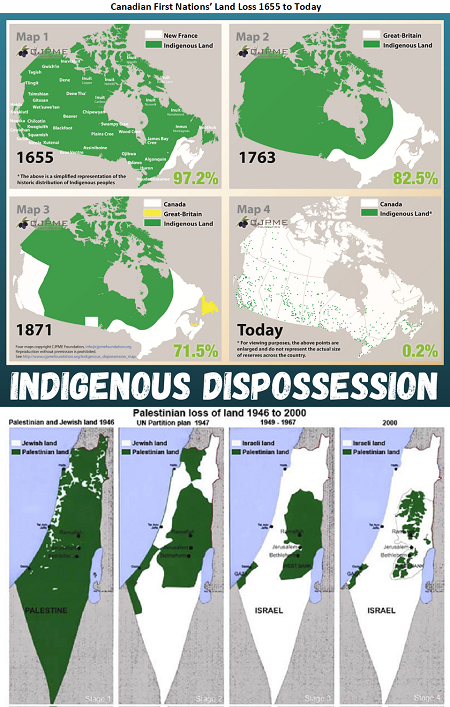Reckoning with Colonialism in Canada

July 1st marked Canada’s national day of celebration, commemorating the joining of four British colonies into a single Dominion of the British Empire. But this year, local governments across the country cancelled Canada Day celebrations in light of findings confirming the existence of hundreds of unmarked graves of Indigenous children at “Indian Residential Schools,” with reminders from Indigenous nations that many more such grave sites are likely to exist.
This unsettling reminder of the horrendous methods used to entrench setter-colonial power and erase Indigenous peoples comes in the first year of the Fourth International Decade for the Eradication of Colonialism. Yet Indigenous peoples of North and South America, Australia, New Zealand, Palestine, and many other colonized places have still not seen the eradication of colonialism in their homelands. All have witnessed a drastic and continual decline in control of their respective territories over the past decades and centuries.
Despite the name, “Indian Residential Schools” did not resemble what we understand as schools. Rather, they were explicitly intended to “kill the Indian in the child,” to sever the link between Indigenous peoples and their families, cultures, and traditional territories. Young Indigenous children were forcibly removed from their homes, often with the help of the Royal Canadian Mounted Police, to be raised in institutions devoid of love, care, or compassion. In 2015, findings of the Truth and Reconciliation Commission revealed that these institutions subjected Indigenous children to cruelty, neglect, physical and sexual abuse, and death.
While much attention has been given to the cultural repercussions of residential schools, including loss of language and forced assimilation, less focus has been put on the clear link between these schools and the land from which Indigenous children were stolen. Christi Belcourt, apihtâwikosisâniskwêw (Cree Métis) artist and author, reminds us that “the direct intent of the kidnapping, abuse, murder and assimilation training of Indigenous children was so that there would be unfettered access to Indigenous land and resources,” to facilitate resource extraction that would benefit the colonizers.
In many parts of Canada, the colonial government signed treaties with Indigenous nations outlining the sharing of lands and waters. However, the government of Canada has failed to honor those treaties. In other parts of Canada, Indigenous nations have never formally agreed to share their territories, but rather had their lands taken without their permission.
In response, the Indigenous-led movement Land Back is demanding a change to land governance in many colonized nations, including Canada. The movement demands the re-establishment of Indigenous control over their traditional territories and resources, real power to make decisions on land use, and reclaiming Indigenous sovereignty, including rights and responsibilities, to the land.
|